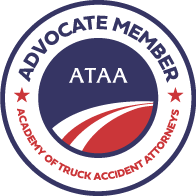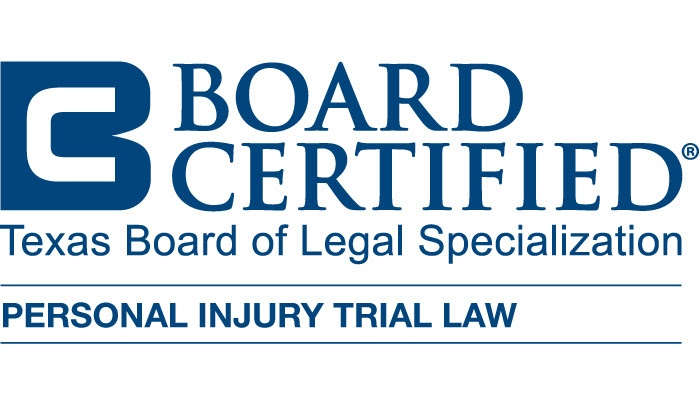Slip and fall accidents are a leading cause of injuries in the United States, affecting people of all ages and backgrounds. From broken bones to traumatic brain injuries, these accidents can result in a wide range of physical and emotional harm. Understanding the types of injuries that can occur in slip and fall accidents is essential for both prevention and legal recourse in the event of an injury.
Join us as we examine the common types of injuries associated with slip and fall accidents, discuss the factors that contribute to their occurrence, and provide guidance for individuals who have been injured due to negligence. Whether you’re a victim of a slip and fall accident or simply seeking to expand your knowledge, this guide will empower you with the information needed to protect your rights and pursue justice.


What are Slip and Fall Accidents?
Slip and fall accidents happen when a person loses their footing or balance and falls due to dangerous conditions on someone else’s property. These incidents typically involve several elements:
Slippery surfaces are a common cause of these accidents. They often happen on areas that are wet or slick, such as floors that have been spilled on, or surfaces that have recently been cleaned with water, wax, or other slippery substances.
Uneven or obstructed surfaces can also lead to falls. This includes things like cracked sidewalks, floors that are uneven, or carpets that are not properly secured. These irregularities can easily trip someone, leading to a fall.
The absence of adequate warning signs is another contributing factor. Property owners are responsible for informing visitors of any potential dangers on their premises. If they fail to provide clear warnings about slippery or uneven surfaces, the likelihood of accidents increases.
Common Instances of Slip and Fall Accidents
Slip and fall accidents are common yet often serious incidents that can occur in a variety of settings, impacting the lives of those involved significantly. In retail environments like stores, supermarkets, and shopping centers, these accidents are typically caused by spills, wet floors, or cluttered aisles, with frequent occurrences at entrances, in the produce sections, and near checkout counters. Restaurants and bars also see a high incidence of slip and fall accidents, due to slippery surfaces from spilled drinks and the congested nature of these venues, particularly around entrances, restrooms, and dining tables.
In the corporate world, office buildings and other workplace areas are not immune to these incidents. Hazards such as wet floors, loose cables, and poorly maintained staircases contribute to accidents. Moreover, external environments like sidewalks and parking lots pose risks due to cracked or uneven surfaces, potholes, icy conditions, and general poor maintenance, especially during adverse weather.
These accidents not only lead to physical injuries but can also have profound personal and financial implications for the victims. It is crucial for those affected by slip and fall accidents due to potential negligence by property owners or managers to be aware of their rights and the legal options available to them.
Common Types of Injuries in a Slip and Fall Case
While “slip and fall” may not sound too severe, a wide range of injuries can result from these accidents — any number of which may be grounds for a slip and fall case.
Fractures and Broken Bones
Fractures and broken bones are among the most common injuries sustained in slip and fall accidents. These injuries can occur when individuals land forcefully on hard surfaces such as concrete floors or pavement. Common fractures include wrist fractures, ankle fractures, and hip fractures.
Head Injuries
Head injuries, including concussions and traumatic brain injuries (TBIs), can occur when individuals strike their heads during a fall. Even seemingly minor falls can result in head injuries with long-term consequences, including cognitive impairments, memory loss, and emotional changes.
Back and Spinal Cord Injuries
Slip and fall accidents can cause severe back injuries, including strains, sprains, and herniated discs. In more serious cases, individuals may suffer spinal cord injuries that result in partial or complete paralysis, loss of sensation, or impaired motor function.
Soft Tissue Injuries
Soft tissue injuries, such as bruises, cuts, and strains, are common in slip and fall accidents. These injuries may not be immediately apparent but can cause significant pain and discomfort, leading to medical treatment and rehabilitation.
Hip Injuries
Hip injuries, particularly among older adults, are a significant concern in slip and fall accidents. Fractured hips can result in prolonged immobility, loss of independence, and increased risk of complications such as infections and pressure ulcers.
Sprains and Ligament Tears
Sprains and ligament tears, such as ankle sprains or torn ACLs, can occur when individuals twist or hyperextend their joints during a fall. These injuries can be painful and may require surgical intervention and physical therapy for recovery.
Emotional and Psychological Trauma
In addition to physical injuries, slip and fall accidents can also cause emotional and psychological trauma, including anxiety, depression, and post-traumatic stress disorder (PTSD). Victims may experience fear of falling again or develop a reluctance to engage in activities they once enjoyed.
Helping Injury Victims for Over 25 Years
My focus is to give a voice to families who have suffered a wrongful death or a serious injury to a family member caused by an 18-Wheeler, commercial truck, or a drunk driver.
Contact us today, we can help you.
The Essential Elements of a Slip and Fall Case
Duty of Care
The first essential element of a slip and fall personal injury case is establishing that the property owner or manager owed a duty of care to the injured individual. Property owners have a legal obligation to maintain their premises in a reasonably safe condition and to warn visitors of any known hazards.
Breach of Duty
The next element is demonstrating that the property owner breached their duty of care by failing to address hazardous conditions or failing to warn visitors of known dangers. This may involve proving negligence, such as failure to repair a broken handrail, clean up spilled liquids, or remove debris from walkways.
Causation
Causation refers to establishing a direct link between the property owner’s breach of duty and the injuries suffered by the plaintiff. In slip and fall cases, it’s essential to demonstrate that the hazardous condition on the property directly caused or contributed to the plaintiff’s injuries.
Damages
Finally, the plaintiff must prove that they suffered actual damages as a result of the slip and fall accident. Damages may include medical expenses, lost wages, pain and suffering, and other losses incurred due to the injury. Documenting and quantifying these damages is critical for building a strong case.
Key Considerations in Slip and Fall Personal Injury Cases
When considering slip and fall personal injury cases in Texas, several key aspects come into play. Firstly, there’s the notice of hazard. Texas property owners might claim ignorance of any dangerous conditions that caused a slip and fall. However, plaintiffs can overcome this defense by showing that the owner should have been aware of the hazard through reasonable inspection or maintenance practices.
Another crucial element is comparative negligence. In Texas, the law adopts a modified comparative negligence approach. This means that even if the injured party bears some responsibility for the accident, they can still pursue damages. The amount recoverable, however, is adjusted according to their share of fault.
It’s important to consider the statute of limitations. Victims of slip and fall accidents in Texas must file their lawsuit within two years from the injury date. Missing this deadline could mean forfeiting the right to compensation. These considerations are pivotal in navigating the complexities of slip and fall cases effectively.
Related Videos
Choosing a Personal Injury Attorney
Types of Compensation in a Truck Accident Claim
Types of Damages in a Slip and Fall Lawsuit
Civil law seeks to make victims whole through monetary compensation, referred to as “damages.” In slip and fall lawsuits, several types of damages may be recoverable, each addressing different aspects of the victim’s loss.
One of the primary claims in such cases is for medical expenses incurred due to the injury. This can cover a range of costs from hospital and emergency room fees to surgeries, medications, and ongoing physical therapy—essentially any medical treatment necessary for recovery.
Victims may also claim lost wages if the injury temporarily or permanently prevents them from working. This includes compensation for income lost during the recovery period, as well as future earnings, bonuses, and benefits that the victim would have received if not for the accident.
Pain and suffering constitute another category of damages, compensating victims for the physical pain, emotional distress, and mental anguish experienced as a result of their injuries. The amount awarded here can vary widely, reflecting the injury’s severity and its impact on the victim’s life.
In cases where the accident results in permanent disability or impairment, victims may be entitled to additional compensation. This can include damages for lost earning capacity, diminished quality of life, and the emotional difficulties associated with living with a disability.
Sometimes, personal property is also damaged in a slip and fall accident—clothing, jewelry, or electronics, for example. In such instances, victims can seek compensation for the cost of repairing or replacing these items.
Punitive damages may be awarded in exceptional cases where the negligence or misconduct of the property owner was particularly egregious. These are not just compensatory but are meant to punish the defendant and deter future misconduct. However, such awards are rare in slip and fall cases.
Understanding the scope of possible damages is crucial for victims of slip and fall accidents, especially when such incidents result in significant physical, emotional, and financial challenges.
Fighting for Slip and Fall Victims
At Willumsen Law Firm, we understand the physical, emotional, and financial toll that slip and fall injuries can take on individuals and their families. If you believe you have suffered a slip and fall injury due to the negligence of a property owner or manager, we’re here to help.
Our experienced personal injury attorneys are dedicated to advocating for your rights and pursuing the compensation you deserve. Don’t wait to seek legal guidance — contact us today for a consultation. Your well-being and recovery are our top priorities, and we’re committed to fighting for the justice you deserve.



